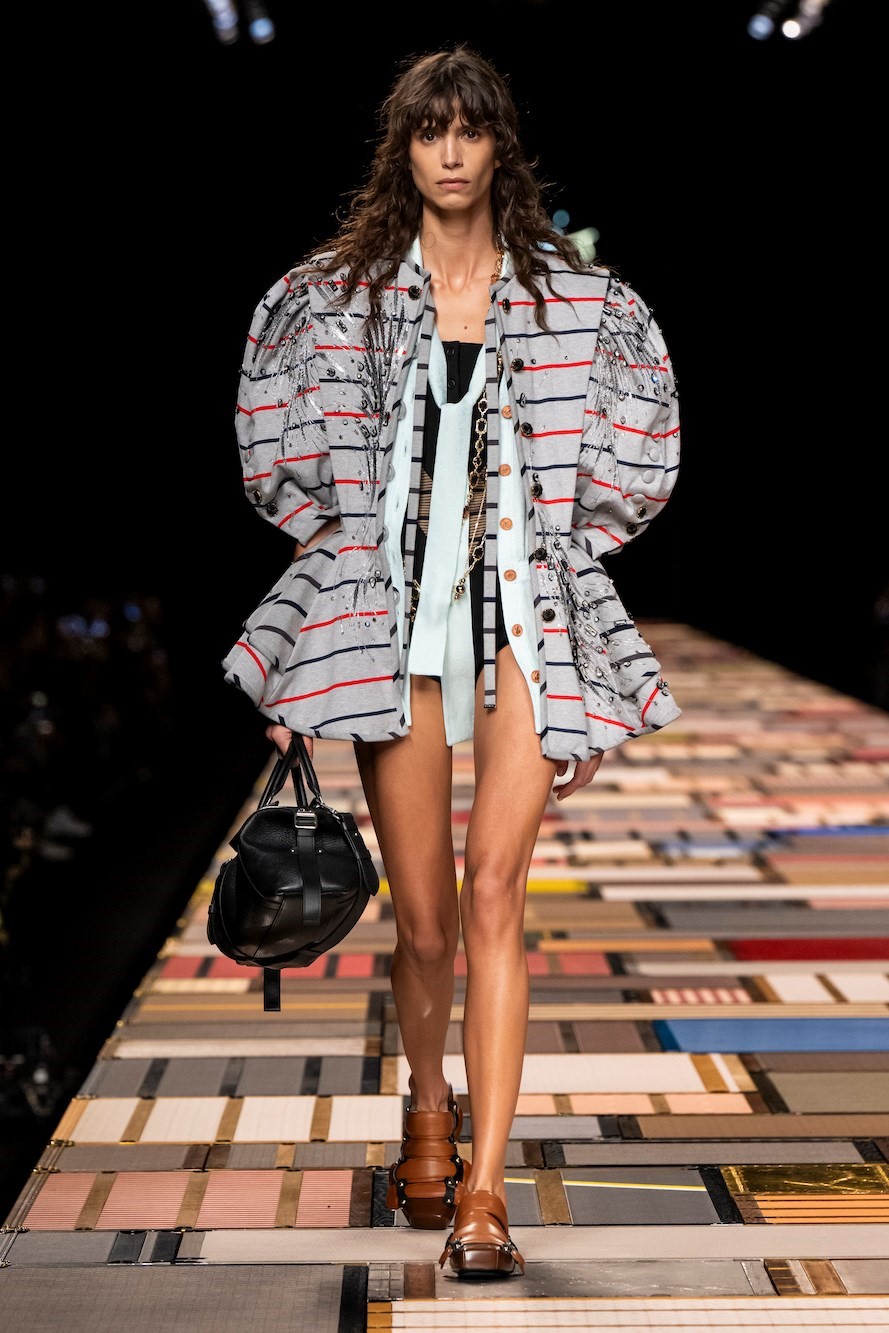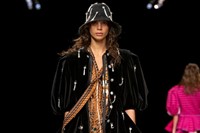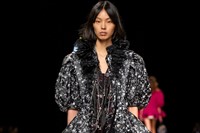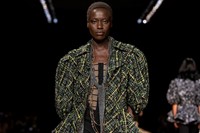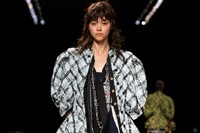So, Louis Vuitton – the last big show, on the last day of Paris Fashion Week – was all about the power of French fashion. That was kind of the first thing I thought of when I saw the first look – namely, a throwback to the 1890s, when Vuitton first invented its Monogram (1894, when it became one of the first logos in existence) and when French fashion, essentially, dictated what the world wore. What the world wore, back then, was enormous, inflated leg-o-mutton sleeves, waists pinched in, hips flaring. The silhouette was definite from the very first exit.
Of course, it wasn’t a static vision of that period in the hands of Nicolas Ghesquière, who iterated that era’s shapes with a suppleness and movement that spoke of modernity. He stripped out the bombast, the whalebones and interlinings that made the originals basically stand up by themselves – some of the earliest examples of the art of haute couture, where appearance was the prerequisite far over and above any idea of comfort. Ghesquière stated he’d challenged his teams who deal with tailoring and flou – the expressive French term for all that is soft, floaty, and essentially un-tailored – to work on their diametric opposite, namely to afford a rigidity to the fluid and an unexpected sinuosity to that which is normally firm. “Soft power” was a phrase he threw out, and there was something of the soft sculpture to his poufed and rounded silhouettes. They were certainly strong.
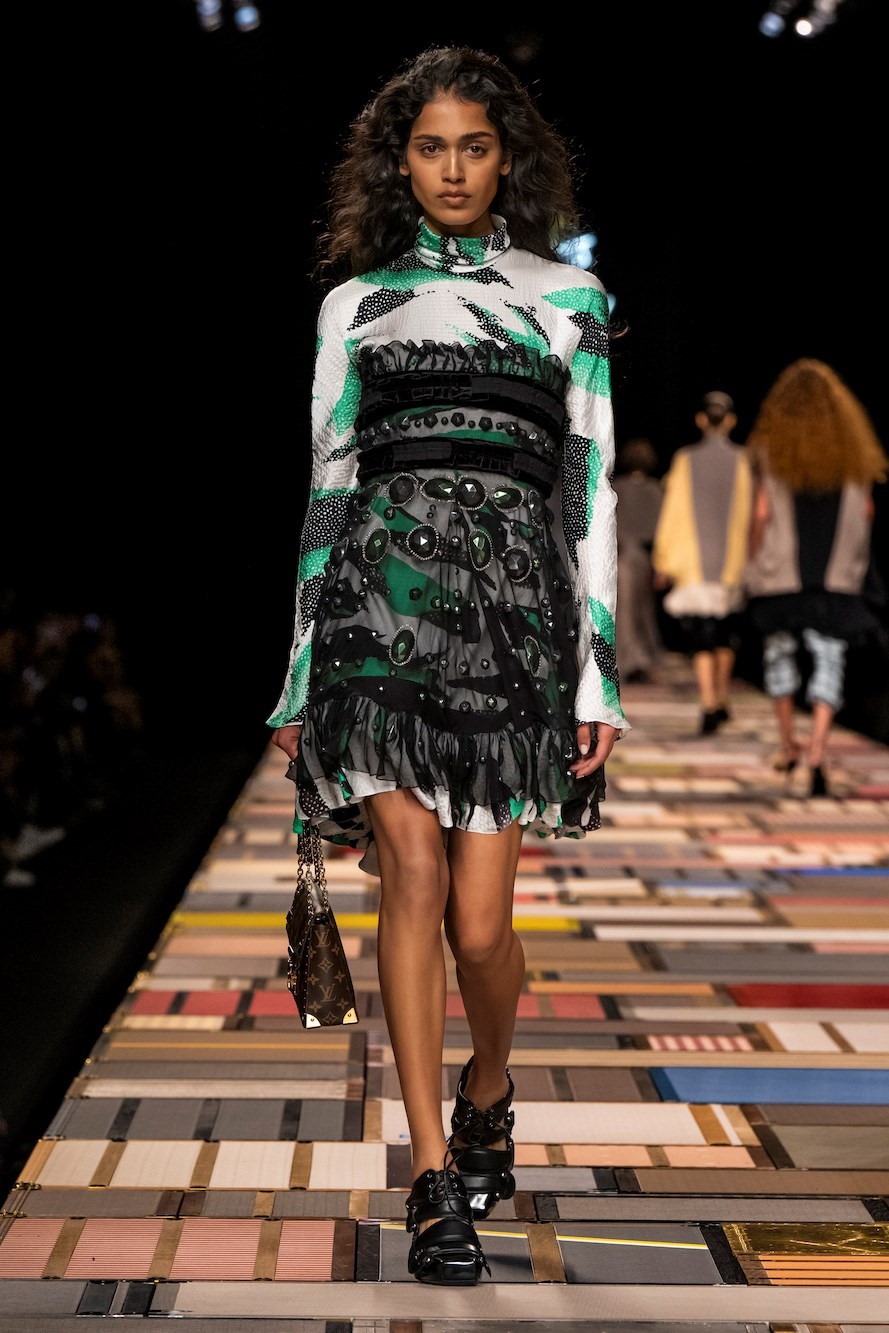
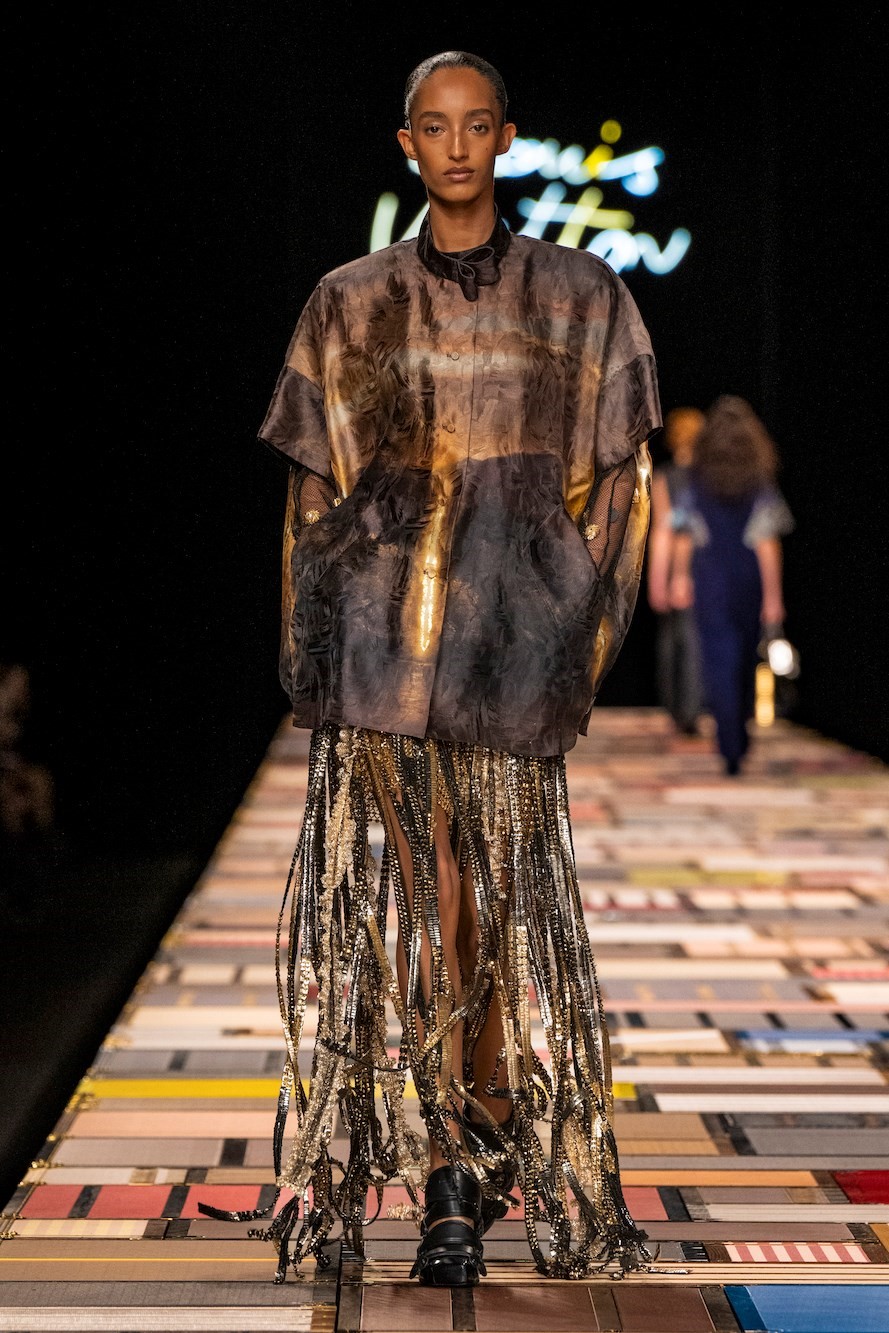
But, equally, soft power could be applicable to the idea of femininity, and to that archetype of the Parisienne that was prevalent around the turn of that century – women who used their charm as armour, manipulating men and controlling society. Hey, if you’ve ever watched HBO’s The Gilded Age, you know exactly what I’m talking about – or, perhaps, if you’ve read Nana by Émile Zola, whose titular courtesan was based on the demi-mondaine Valtesse de La Bigne. Or, indeed, Proust. They’re all about the soft power of women – the latter two, specifically Parisienne women – for whom fashion and its artifice was an essential part of their arsenal.
Of course, Ghesquière wasn’t dressing courtesans, nor Proustian duchesses. Rather, his clothes were engineered for modern women and modern living, hence the movement, something he’s been focused on during his time at Vuitton. After all, trunks are made for movement – this time, they were patchworked together to form a catwalk that rose up as the first model marched her path down, lifting her skywards. That once again was reminiscent of the past – of the 1980s, a period that Ghesquière often fondly refers to, and where the extremes of the 1890s could once again be seen. Of course, both the 1980s and 1890s were uncertain moments, balanced on the lip of the volcano, to borrow a phrase. And there was a similar feel to this Vuitton collection, a tension between opposites reflecting the state of the world.
That said, the models danced out to disco music, the last three outfits ending in shredded skirts of glitter, with disco-ball handbags. Because if you’re on the lip of the volcano, you’d better be dancing.
